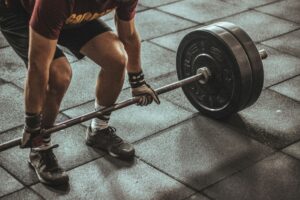Returning to normal activities after a hair transplant is part of the recovery process, but it requires some thought. Heavy weightlifting after hair transplant and other types of vigorous exercising can affect the healing of the recently transplanted hair follicles, when these activities are done prematurely. At HairNeva we offer full support post transplant for patients who want to get back as quickly and safely as possible to their regular fitness lifestyle without compromise of hair growth.
Why Post-Transplant Exercise Matters
There are a lot of advantages to exercising like improved blood flow, good mental health and more muscle power. But after a hair transplant, vigorous physical exercise may be risky:
- Increased blood pressure and sweating: Lifting heavy increases the risk of bleeding or swelling around your new graft as a result of heightened blood pressure.
- Trauma: Accidental jostles or contact with machines can cause grafts to become dislodged.
- Sweat: Sweat might be annoying to healing scalp and even cause infection due to moisture.
As for complications, the key is timing and precautions that can keep you from causing damage and enable you to protect your hair transplant investment.

When Can You Start Weightlifting After Hair Transplant?
This decision may depend on how the grafts are placed but most doctors and hair transplant specialists usually advise to wait 2–4 weeks before you again lift moderate weights or more. The lighter exercises like walks or light stretching you could typically carry out in week 1 while recovering.
Tips for Safe Weight Lifting Post-Transplant
- Ease into it: Begin slowly and lift lighter weights. Don’t do heavy squats, deadlifts or anything else that increases scalp tension.
- Cover the implant area: Always use a baggy cap or not to make direct contact equipment as the implanted area is very thin to get damage.
- Do Not Sweat: Stay away from heavy exercising that makes you sweat for 2-3 weeks. Healing grafts and the scalp can be bothered by sweat.
- Stay hydrated: The healing process and inflammation control is aided by hydration.
- It all depends on your body: Allow yourself the rest you need, listen to our doctor! Never exceed the instructions given to you by your surgeon when it comes to physical activity and lifting.
Common Concerns and Mistakes
The concern with early exercise is that grafts may fail or be damaged. Slight shedding is normal but too much physical force or accidental strangulation can add risks. At HairNeva we concentrate on patient education for healthy living practices and are there to help monitor recovery to take away the worry of something going wrong.
Additional Recovery Tips
- Sleep Well: Adequate rest supports overall healing and hair growth.
- Avoid Smoking and Alcohol: Both can impair blood flow and slow recovery.
- Follow Scalp Care Guidelines: You should only use the most gentle shampoos and avoid scratching or rubbing the transplanted area.
